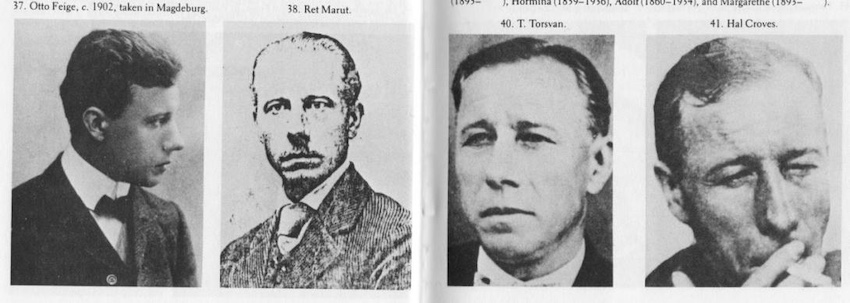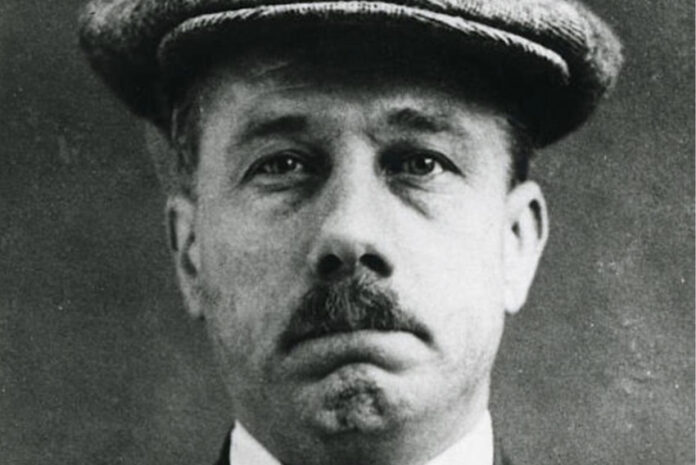The man most-well known as Bruno Traven occupies a unique place in Mexico’s literature. Although born elsewhere, he spent the final 45 years of his life in Mexico, married a Mexican woman and wrote widely about the country — from the oil fields of Tampico to the jungles of Chiapas — ultimately becoming the only foreign-born writer accepted into Mexico’s national canon.
As poet and esteemed academic Jorge Ruiz Dueñas has noted, “There has never been a case like Traven, and not just because of the mystery about him. He seemed to feel Mexico in his own flesh. Other foreign-born writers, such as Malcolm Lowry or D. H. Lawrence, have written well about Mexico, though with a certain sense of detachment or rejection or mimicry. Not Traven. He doesn’t translate Mexico’s social reality and culture; he incorporates and captures it as if he were born here, a Mexican, with all of the feeling.”
The reasons for Traven’s fame
But Traven wasn’t only famous in Mexico. Over 30 million copies of his dozen or so novels and countless short stories have been sold, and in 30 languages.
Several are acknowledged classics, including “The Death Ship,” “The Treasure of the Sierra Madre,” and “Macario.” The latter two titles may be even more famous as movies. “The Treasure of the Sierra Madre,” directed by John Huston and starring Humphrey Bogart, won three Academy Awards when it was released in 1948, and is considered one of the best Hollywood movies ever made. Its most famous line, remembered (inaccurately) as “We don’t need no stinkin’ badges,” uttered by Mexican actor Alfonso Bedoya, has passed into legend.
“Macario,” meanwhile, is a beloved gem from the Golden Age of Mexican Cinema. Directed by Roberto Gavaldón, starring Ignacio López Tarso and Pina Pellicer and with cinematography from one of Traven’s best friends, Gabriel Figueroa, “Macario” was the first film from Mexico ever nominated for an Academy Award for Best Foreign Language Film. It was also nominated for the Palme d’Or at the 1960 Cannes Film Festival.
Of course, as famous as Traven was for his books and stories — and the movies they inspired, he was even more famous for his enigmatic life.
He was variously known by more than 10 aliases. Seemingly, each time something true was discovered about his background, a new mystery would appear. Even today, academics continue to debate where he was born, his birth name and the timeline of his career.

Who was B. Traven?
When iconic Hollywood actor and director John Huston came to Mexico to meet the author of his source material for the filming of “The Treasure of the Sierra Madre,” he was instead confronted, first in Mexico City, and later in Acapulco, by a man named Hal Croves who claimed to be Traven’s literary agent. Huston always suspected Croves and Traven were the same man, and he was correct.
But Traven was neither, really, not even Traven. When the author who had penned all these classics and who had studied at UNAM and become a Mexican citizen under the name Traven Torsvan finally died in Mexico City in 1969, his death was followed by a series of revelations about his supposedly true identity.
First, his wife, Rosa Elena Luján, revealed posthumously that his real name was Traven Torsvan Croves, originally from Chicago. But this was yet another subterfuge, designed to obscure his true identity even from the grave. He had been claiming to be from the U.S. ever since he was arrested in London in 1924, on his way to Mexico.
Soon, however, Luján admitted that her husband’s real name was Ret Marut and that he was German by birth. This was at least half true.
During the first decade of the 20th century, Ret Marut was active as an actor and director in German theatrical circles, and in the decade that followed, he started an anarchist magazine before taking part in the ill-fated attempt to establish a Bavarian Soviet Republic in 1919.
During the crackdown in Germany that followed, many of the revolutionaries who participated in this movement were killed, and Marut himself was sentenced to death before escaping. This incident was ample reason for the anonymity he would seek for the rest of his life.

But, spoiler alert: Ret Marut wasn’t his real name either. The man who would become B. Traven was, according to Figueroa, was born Moritz Rathenau, the illegitimate son of a wealthy industrialist named Emil Rathenau, who founded the German electricity giant AEG.
There are other theories too. Even 50-plus years after his death, Traven’s life is still a riddle wrapped in a mystery inside an enigma.
The writing life of B. Traven and his legacy
Despite his many aliases and mania for privacy, it shouldn’t be supposed that Traven was living in Mexico like some kind of hermit. He was friends not only with Figueroa but also with other prominent artists of the day — including Diego Rivera and David Siqueiros — and following his marriage in 1957, Traven acquired an adopted family.
During his over four decades in Mexico, he lived in many parts of the country, moving from Tampico to Chiapas — the latter being where his ashes were scattered after his death — then to Acapulco, before finally settling in Mexico City in his later years.
Although fluent in Spanish, his books were always written first in German before being translated. He would sometimes handle his own English translations with the help of an editor, since he was also fluent in that language — as befitted someone who liked to say he was from Chicago. But the Spanish-language editions were translated first by Esperanza López Mateos, sister of President Adolfo López Mateos, and later by his wife.
It was these enduring novels and stories that Traven saw as his true legacy, and that he considered far more important than whatever name was stamped on his passport or printed on his driving license.
To him, they represented his life’s work, an idea he summarized by saying: “An author should have no other biography than his books.”
Chris Sands is the Cabo San Lucas local expert for the USA Today travel website 10 Best, writer of Fodor’s Los Cabos travel guidebook and a contributor to numerous websites and publications, including Tasting Table, Marriott Bonvoy Traveler, Forbes Travel Guide, Porthole Cruise, Cabo Living and Mexico News Daily.
